Q
When is the Release Date of Perodua Aruz?
The Perodua Aruz was officially launched in the Malaysian market on January 15, 2019. This 7-seater SUV is a model developed by Perodua based on the Toyota Rush. It targets family users and emphasizes economic practicality. After its launch, it quickly became one of the popular choices in the local market.
The Aruz is equipped with a 1.5L Dual VVT-i engine and a 4-speed automatic transmission, offering economical fuel consumption. At the same time, it is equipped with advanced safety features such as the ASA 2.0 (Advanced Safety Assist) system, including pre-collision warning and automatic emergency braking.
As Perodua's first genuine SUV, the Aruz fills the gap in the brand's product lineup in this segment. Its high ground clearance and spacious interior are particularly suitable for Malaysia's diverse road conditions and family needs. The launch of this vehicle further enriches Perodua's product range, complementing models like the Ativa and Bezza, and providing consumers with more options.
For consumers who want to stay informed about the latest developments of the Aruz, it is recommended to follow the official Perodua website or the information provided by authorized dealers to get the latest news on model upgrades or promotional activities.
Special Disclaimer: This content is published by users and does not represent the views or position of PCauto.
Related Q&A
Q
What are the colors of Aruz 2019?
The 2019 Perodua Aruz comes with a variety of color options, including Solid White, Metallic Silver, Metallic Dark Grey, Metallic Delima Red, and Pearl Delima White. These choices should cater to different consumers' aesthetic preferences. As a 7-seater SUV, the Aruz doesn't just offer plenty of colors – its design also focuses on practicality and family needs, with a spacious interior and flexible seating arrangement that's perfect for family trips. Color isn't just about looks; it also affects resale value and daily maintenance. For example, lighter colors reflect more sunlight in hot weather, keeping the interior cooler, while darker shades might need more frequent cleaning to stay looking good. Plus, the Aruz's metallic and pearl paint finishes are generally more durable and visually appealing than regular solid paint, though they might cost more to maintain. When picking a color, besides personal taste, it's worth considering the local climate and how you'll use the car to keep it in great shape for years to come.
Q
How many km per liter is Aruz?
The actual measured fuel consumption of the Aruz is 22 liters per 100 kilometers. After conversion, the vehicle can travel approximately 4.55 kilometers per liter. Its official combined fuel consumption is 6.41 liters per 100 kilometers, meaning it can travel about 15.6 kilometers per liter.
In actual driving, the vehicle's fuel consumption is affected by various factors such as driving style, road conditions, and vehicle load. The specific kilometers traveled per liter may vary. For example, situations like rapid acceleration, sudden braking, and long-term traffic jams will increase fuel consumption, and the kilometers traveled per liter will decrease accordingly. On the other hand, good driving habits such as smooth driving and maintaining an appropriate speed can help improve fuel economy and increase the kilometers traveled per liter.
Q
Is Aruz ladder frame?
The Perodua Aruz features a monocoque chassis instead of a ladder frame. This design, commonly found in modern SUVs, offers better road-driving stability and riding comfort. At the same time, it reduces the vehicle's weight to improve fuel efficiency. As a 7-seat SUV targeting family users, the Aruz's monocoque structure is more suitable for daily urban commuting and long-distance travel, balancing spatial practicality and handling flexibility.
It's worth noting that ladder frames are mostly used in hardcore SUVs or pickups that emphasize off-road capabilities, such as the Toyota Hilux. These vehicles are characterized by strong torsional resistance and easy maintenance, but they offer poor comfort on the road. When Malaysian consumers choose a vehicle, they can make a decision based on their own needs. If the vehicle is mainly for urban use, a monocoque chassis is more appropriate. If they often encounter rough terrains, ladder-frame vehicles have more advantages.
As a local brand, Perodua has fully considered the road conditions in Malaysia and users' habits in the design of the Aruz. Its chassis tuning not only ensures comfort but also allows it to handle light unpaved roads.
Q
What kind of engine is in Perodua Aruz?
The Perodua Aruz is equipped with a 1.5-liter Dual VVT-i naturally aspirated gasoline engine, coded as 2NR-VE. This engine is provided by Perodua's partner, Toyota. It adopts the Dual Variable Valve Timing-intelligent (Dual VVT-i) technology, which can optimize fuel efficiency and power output. The maximum power is 77 kilowatts (104 horsepower), and the peak torque is 136 Nm. It is paired with a 4-speed automatic transmission or a 5-speed manual transmission, suitable for daily urban driving and light off-road needs. This engine has shown stable performance in the Malaysian market and is favored by consumers for its reliability and low maintenance cost. The Dual VVT-i technology improves combustion efficiency, reduces fuel consumption, and at the same time cuts emissions by adjusting the opening times of the intake and exhaust valves, meeting environmental protection standards. For Malaysian consumers, the engine configuration of the Aruz offers high cost-effectiveness among similar models, especially suitable for family use, balancing power and economy. Moreover, compared with turbocharged engines, naturally aspirated engines have a simpler structure and lower maintenance costs, making them a great choice for users who value practicality.
Q
How much is a Perodua Aruz battery?
The battery price of the Perodua Aruz usually ranges between RM200 and RM400, specifically depending on the battery brand, model, and where you purchase it. The price of the original-factory battery will be slightly higher, while third-party brands like Bosch, Amaron, or Century may offer more cost-effective options. It is recommended that car owners choose a battery with specifications that match their vehicle when replacing the battery. For example, common models such as 44B20L or 55D23L can ensure compatibility and performance.
In addition, regularly checking the battery status and keeping the charging system operating normally can extend the battery life. Generally, the lifespan of a car battery is around 2 to 3 years, but the actual usage time will be affected by driving habits and climatic conditions. If you find it difficult to start the vehicle or the lights are dimming, it may be a sign of battery aging, and you should check or replace it in time.
In Malaysia, many car repair centers or battery specialty stores offer free testing and installation services. Before making a purchase, you can compare the prices and services of several stores to get the most suitable solution.
Q
Which country made Perodua Aruz?
The Perodua Aruz is manufactured by Perodua, a local Malaysian automotive brand. It's a seven-seat SUV specifically designed for the Malaysian market. Since its launch in 2019, it has won the favor of many family users thanks to its spacious interior and practicality. As a Made-in-Malaysia vehicle, the Perodua Aruz is assembled locally, which shows Perodua's emphasis on meeting the needs of Malaysian consumers. Its design and functions are optimized for Malaysian road conditions and family use. For instance, the high ground clearance makes it suitable for rural roads, and the fuel-efficient 1.5L Dual VVT-i engine takes into account daily economy.
It's worth mentioning that Perodua, as the second-largest car manufacturer in Malaysia, has long-term partnerships with Japanese automakers Toyota and Daihatsu. So, it has advantages in technology sharing and quality control. The Aruz incorporates some proven technologies from its partners. For example, it shares the platform with the Toyota Rush, but the configuration and pricing strategies are adjusted for the Malaysian market, making it a highly cost-effective choice.
For Malaysian consumers who value practicality and budget, the Aruz offers a solution that meets local needs. At the same time, it also demonstrates the progress of local cars in R & D and manufacturing.
Q
Is Aruz 6 seater?
The Perodua Aruz is a 7-seater SUV designed for family use, featuring a 2+3+2 seat layout. So, strictly speaking, it's not a 6-seater model. However, if you fold the third-row seats, it can be transformed into a 5-seater configuration. This vehicle is equipped with a 1.5L Dual VVT-i engine paired with a 4-speed automatic transmission, focusing on economic practicality and high cost-effectiveness. Its width of 2,025mm and length of 4,075mm offer relatively spacious seating space, which is especially suitable for the medium-and short-distance travel needs of multi-member families in Malaysia.
It's worth noting that 7-seater models are quite popular in the Malaysian market, mainly due to the local family structure and usage habits. Compact SUVs like the Aruz combine the flexibility of urban commuting and the convenience of occasional passenger-carrying. When consumers are making a purchase, they can compare the space utilization differences with similar models in the same class, such as the Proton X70 or the Toyota Rush. At the same time, it is recommended to take a test drive to experience whether the legroom in the third row meets your needs, as the vehicle's size directly affects the comfort during long-distance rides.
Q
Is Perodua Aruz an MPV?
The Perodua Aruz is indeed classified as a compact MPV (Multi-Purpose Vehicle). It's built on the Toyota Rush platform and features a three-row, seven-seat layout, making it suitable for families or consumers who need more passenger space. The Aruz's body dimensions and relatively high ground clearance also endow it with certain SUV characteristics. However, its official positioning still focuses on MPV functionality, emphasizing practicality and space flexibility.
In the Malaysian market, the Aruz has become the top choice for many families, thanks to Perodua's brand advantage of high cost-effectiveness and low maintenance costs. MPV models are particularly popular locally because they can meet both daily commuting and weekend family travel needs. The Aruz is also equipped with safety features such as the ASA (Advanced Safety Assist) driving assistance system, which further enhances its competitiveness.
If users are considering an MPV but occasionally need to tackle light unpaved roads, the Aruz's crossover design is a better fit than traditional MPVs. However, it should be noted that the third-row space is more suitable for children or short-distance rides. When Malaysian consumers are choosing a car, they can comprehensively consider factors like the number of seats, fuel consumption (the Aruz is powered by a 1.5L Dual VVT-i engine), and their budget. They can also compare it with models in the same class, such as the Proton Exora or Toyota Avanza. Ultimately, the choice depends on personal needs and preferences.
Q
What kind of gearbox is Perodua Aruz?
The transmission types of Perodua Aruz vary across different model years. For models produced between 2019 and 2021, the transmission type is AT (4-speed electronically controlled automatic transmission system E-AT). This type of transmission has a relatively complex internal structure. It uses planetary gears to achieve speed changes and torque conversion, which results in higher R & D and production costs. However, it offers good shifting comfort, reliability, and durability.
As for the 2023 Aruz model, the transmission type has been upgraded to CVT. A CVT transmission enables the vehicle to shift gears smoothly during driving, providing a better driving experience. Moreover, it can help improve fuel economy to a certain extent.
Q
When was Aruz launched?
The Perodua Aruz is a seven-seater SUV officially launched in the Malaysian market on January 15, 2019. As the first model of the Perodua brand built on the DNGA (Daihatsu New Global Architecture) platform, it targets the family user market, offering spacious seating and practical functionality.
The Aruz is equipped with a 1.5-liter dual VVT-i naturally aspirated engine, paired with a 4-speed automatic transmission, delivering affordable fuel performance. At the same time, it comes with advanced safety features such as the ASA 2.0 (Advanced Safety Assist) system, which includes functions like pre-collision warning and lane departure warning, making it suitable for family users who prioritize safety.
The launch of this vehicle has enriched Perodua's product line in the SUV market. It competes with models like the Honda BR-V and Proton X70 but attracts consumers with a more affordable price and lower maintenance costs.
The Aruz has received a positive response in the Malaysian market and has become one of the top choices for many families. Its durability and practicality are widely recognized, making it suitable for Malaysia's diverse road conditions and family travel needs.
Popular Cars
Model Year
Car Compare
Car Photo
Latest Q&A
Q
How much did a new 2018 beetle cost?
The 2018 Volkswagen Beetle had a starting price range of approximately RM120,000 to RM180,000, depending on the trim and options. The entry-level 1.2 TSI Design model was the most affordable, while the top-spec 2.0 TSI R-Line version approached RM180,000—though final pricing could vary with optional extras and dealer promotions.
As a timeless classic, the 2018 Beetle kept its retro charm but packed modern tech like a touchscreen infotainment system and active safety features. Under the hood, buyers could choose between the fuel-efficient 1.2T or the more spirited 2.0T engine.
Fair warning: Volkswagen discontinued the Beetle in 2019, so you’ll only find it on the used market now. That said, its iconic design and nostalgic appeal still make it a hit among collectors. If you’re eyeing a pre-owned model, always check the vehicle history and maintenance records to snag a solid deal.
Q
What engine does a 2018 VW Beetle have?
The 2018 Volkswagen Beetle offered two gasoline engine options across different markets. The primary powerplant was a 1.2-liter TSI turbocharged inline-four, delivering 105 horsepower and 175 Nm of torque, paired with a 7-speed DSG dual-clutch transmission. This compact forced-induction engine struck a balance between urban fuel efficiency and strong low-end torque.
Higher-spec variants featured an optional 1.4-liter TSI turbocharged unit, bumping output to 150 horsepower. Both engines adopted direct fuel injection and belonged to VW’s widely used EA211 modular family, featuring modern tech like lightweight aluminum blocks.
Though retaining its iconic silhouette, this generation Beetle actually shared its underpinnings with the Golf, inheriting the brand’s proven front-wheel-drive architecture. This platform commonality also translated to easier maintenance, as local dealerships were well-versed in servicing these powertrains thanks to extensive parts sharing across VW’s lineup.
Q
What are the different models of the 2018 VW Beetle?
The 2018 Volkswagen Beetle comes in three main trims: Classic, Trendline, and Sport. All models are powered by a 1.2-liter TSI turbocharged engine delivering 105 horsepower, paired with a 7-speed DSG dual-clutch transmission—perfect for city driving with its nimble handling and solid fuel efficiency.
The entry-level Classic trim rolls on 16-inch wheels and features a basic multimedia system. Stepping up to the Trendline adds 17-inch wheels, fog lights, and chrome accents. The Sport trim leans into its name with 18-inch wheels, a sport-tuned suspension, and unique interior color options.
This generation keeps the Beetle’s iconic retro curves but modernizes them with touches like LED daytime running lights. Inside, you’ll find color-matched dash panels, and with 310 liters of trunk space, it’s more practical than most small cars in its class.
Since the Beetline was discontinued in 2019, the 2018 model stands as the last new generation, making it a rising collector’s item—especially the convertible, which holds strong appeal in the used market. For maintenance, stick to routine service every 15,000 km or 12 months, and regular 95-octane fuel is all it needs.
Q
Does the 2018 Beetle have Apple CarPlay?
The 2018 Volkswagen Beetle did come equipped with Apple CarPlay, integrated into its Composition Media infotainment system. This allowed iPhone users to seamlessly connect for navigation, music, and other apps. The system also supported Android Auto, catering to different smartphone users with its intuitive and responsive interface—definitely a plus for convenience on the road.
That said, some early-production 2018 models might require a software update to activate the feature, so it’s worth checking with an official dealer to confirm your car’s specs or available upgrades. Also, wireless Apple CarPlay wasn’t standard across all trims; it depended on the factory-installed options.
For fans of classic styling who still want modern tech, the Beetle struck a nice balance between retro charm and everyday usability. Competitors like the Mini Cooper offered similar connectivity, but let’s be honest—the Beetle’s iconic design was always its standout feature.
Q
What is the fuel economy of the 2018 Beetle?
The 2018 Volkswagen Beetle's fuel efficiency varies by powertrain. The 1.2L TSI turbocharged version delivers a combined fuel consumption of around 5.5L/100km, while the 1.4L TSI model is slightly thirstier at approximately 6.0L/100km – both perform best with 95-octane petrol.
You'll likely see higher consumption in city driving, but it cruises efficiently on highways thanks to its classic aerodynamic design. For better mileage, stick to routine maintenance like cleaning the air filter and keeping tyres properly inflated. These small habits can help squeeze out extra kilometres per litre.
Though discontinued, the 2018 Beetle remains popular in the used car market – its iconic styling and decent fuel economy make it a practical daily driver. Just remember real-world figures depend heavily on driving style and road conditions, so check owner forums for real-life feedback.
View MoreRelated News
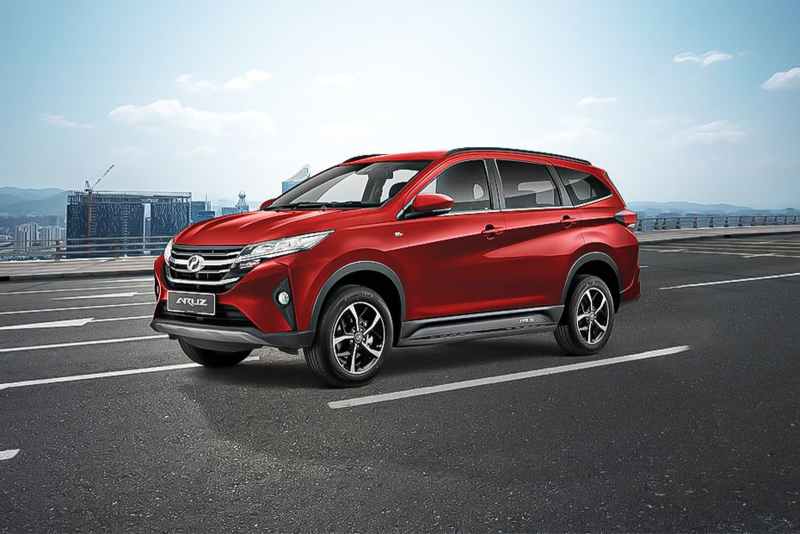
Perodua Aruz Review: A Practical and Safe SUV That Won’t Break the Bank
JamesJul 25, 2025
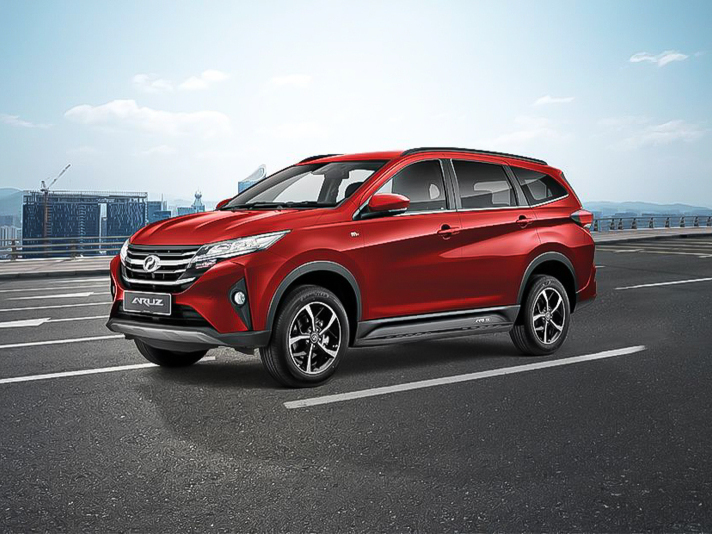
Perodua Aruz Interior Review: A Practical Cabin Despite Basic Materials
JamesJul 23, 2025
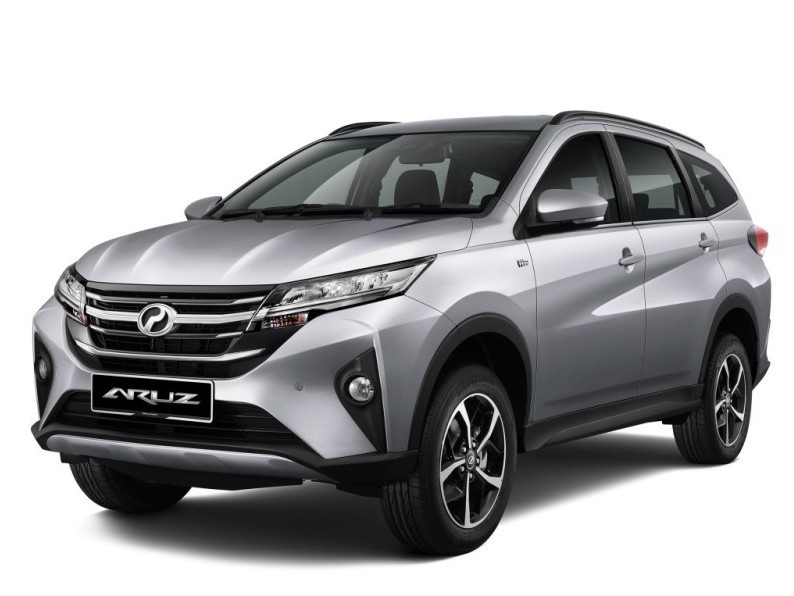
Review: Whether the fashionable exterior and flexible space of Perodua Aruz can become your ideal vehicle?
LienApr 9, 2025
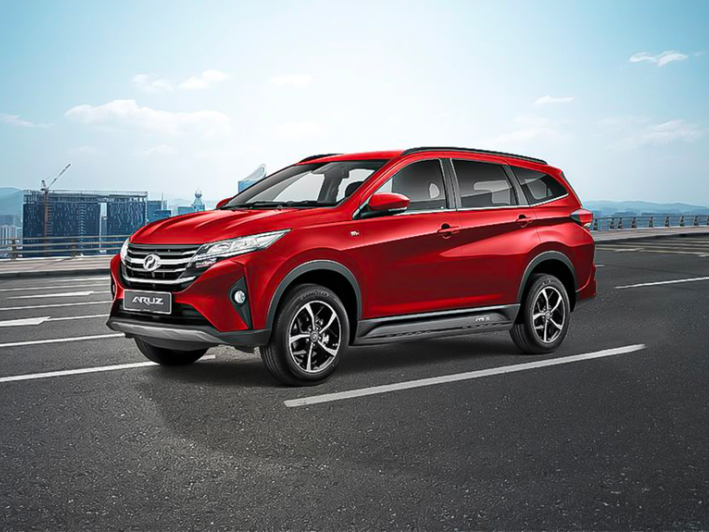
The starting price for the 2021 Perodua Aruz is RM 72,900, and there are two models available
LienJun 14, 2024

Perodua D66B teaser revealed, a new B-segment SUV based on the Yaris Cross is coming soon
WilliamDec 10, 2025
View More












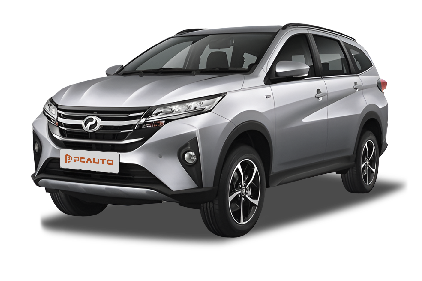





Pros
Cons